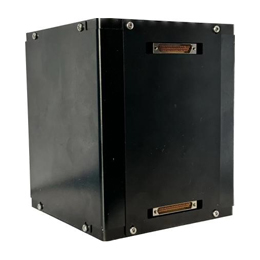What is Light and Small Power System

Light and Small power system is designed to manage and store energy for small satellites, weighing up to 15 kg.
This system integrates a power controller, a lithium-ion battery pack, and a solar array into a cohesive unit to ensure reliable power management and supply.
Key Features of Light and Small Power System:
Power Conversion:
- Efficient Energy Conversion: The system converts energy from the solar array into a stable primary bus power supply. It provides reliable output of 5V and 12V power signals, ensuring consistent power delivery to satellite components.
Power Channel Protection:
- Real-Time Protection: The system continuously monitors the output voltage and current, providing protection against anomalies. In case of irregularities, it promptly disconnects the power to prevent damage to subsequent circuits.
- Surge Tolerance: The power channel module can withstand high startup currents (up to 10ms), accommodating the surge current requirements of the connected loads.
Power Channel Monitoring:
- Comprehensive Monitoring: Each power channel’s voltage, current, and temperature are monitored and transmitted as telemetry data to the satellite’s service computer, ensuring real-time oversight of the power system’s performance.
Telemetry Data Collection:
- Regular Data Logging: The system periodically collects and stores the operational status of the power subsystem’s hardware and components. This data is sent to the satellite’s onboard computer via an internal communication bus for analysis.
Operational Protection:
- Self-Protecting Design: The power subsystem includes hardware-based self-protection mechanisms to detect faults in software or components. It can automatically reset to recover from issues, ensuring continuous operation.
Handshake Protection:
- Service Computer Interaction: The system performs regular handshake operations with the satellite’s service computer. If these operations are not executed within a specified timeframe, the power subsystem can automatically power down and restart the service computer.
Backup Monitoring and Control:
- Fault-Tolerant Control: In the event that the onboard computer encounters issues and cannot be reset, the power subsystem can take over and manage the satellite’s monitoring and control functions to maintain mission integrity.
Additional Information:
| Total mass (excluding sailboard) | ≤1500g |
|---|---|
| size | 96*95*116.5mm |
| Design life | 3years |
| Number of charging ports | 3 ways(including one test charging port) |
| Bus output capability | 13.2V~16.8V、8A |
| Transfer efficiency | ≥94% |
| channel | 12V@2.5A Max *3 ways 5V@3A Max *10 ways 8V4@3A Max *1 ways |
| Switch controllable busbar | 13.2V~16.8V@1A Max *1 way |
| Communication bus | CAN *1 way@500kbps |
| Debugging interface | SWD and Serial port (1 way) |
| Charging efficiency | ≥95% |
| Capacity | ≤10Ah |
| Protective threshold | Overcharge threshold 16.8V, over discharge threshold 10.5V |
| Suggested discharge depth | ≤30%(Individual voltage>3.9V) |
| Working temperature | -30℃~+60℃(Charging is prohibited when the battery temperature is below 0 ℃ and above 40 ℃) |
| Storage temperature | -20℃~+45℃ |
